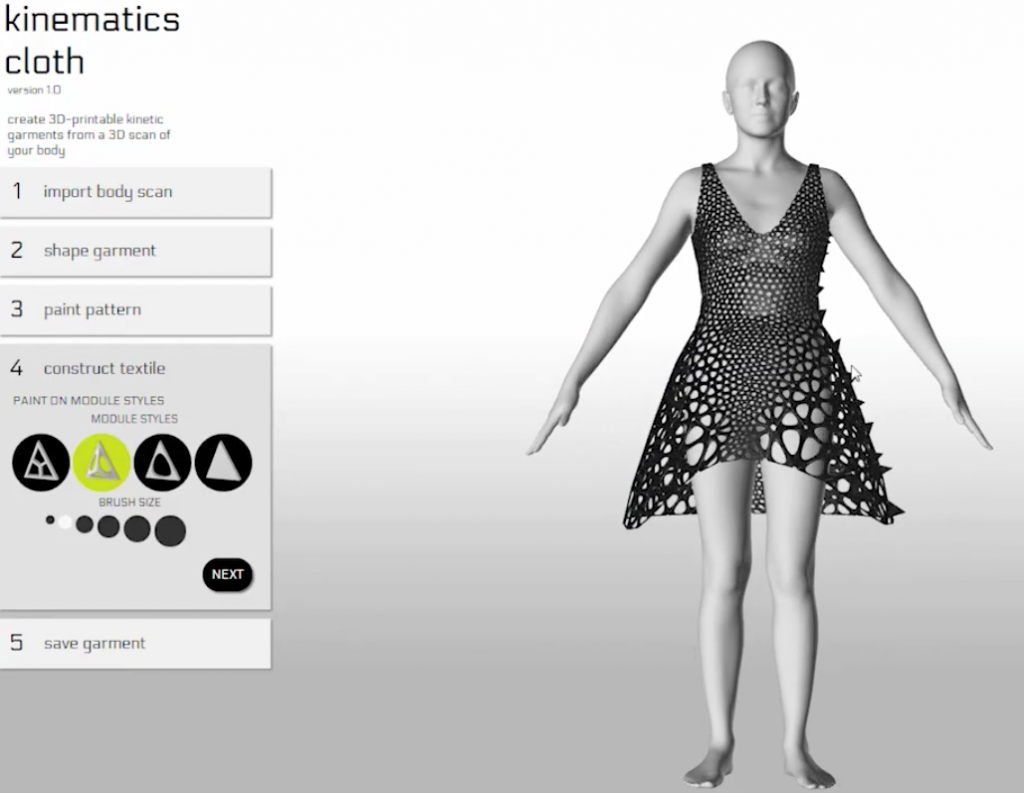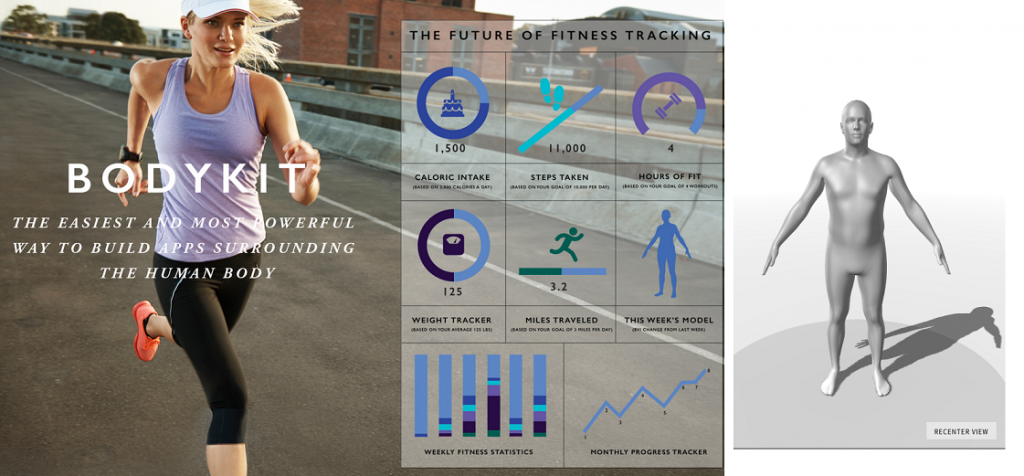 Eventually I envision a time where the majority of our clothes can be 3D printed within hours either at home on through a service like Shapeways or Sculpteo. When technology progresses enough to make such a model economically feasible, the clothing industry as we know it will be changed forever. Total customization could ensure that no two pieces of clothing are printed alike. The design as well as shape and form of a piece could be completely customized by the consumer and then printed out to fit them perfectly.
Eventually I envision a time where the majority of our clothes can be 3D printed within hours either at home on through a service like Shapeways or Sculpteo. When technology progresses enough to make such a model economically feasible, the clothing industry as we know it will be changed forever. Total customization could ensure that no two pieces of clothing are printed alike. The design as well as shape and form of a piece could be completely customized by the consumer and then printed out to fit them perfectly.
Before the clothing industry gets to this point, progress must be made in all aspects of the production process. From materials which are comfortable to wear all day long to printers that can rapid print intricate laced designs to the software required to create perfect fitting apparel, there is still much work required.
With that said, we may have just witnessed a major step forward as Manhattan-based Body Labs has just launched a beta version of BodyKit, the first set of APIs for virtualizing and simulating any human body. The BodyKit’s purpose is for more than just designing 3D printed clothing, however. Its aim is to present applications within the fields of fitness, healthcare, fashion and design, ergonomics, virtual reality, video games, and more, which provide APIs for embeddable components to provide developers with the tools necessary for simulating, visualizing, and analyzing human bodies of any shape and size. The kit is composed of three different parts:
- Instant API: This API is able to predict over 50 different anthropometric and tailor measurements based on a set of standard measurements. The accuracy of these predictions is within 1.1 cm on average, allowing for several rather useful body shape and sizing applications.
- BodyHub API: This allows users to create digital 3D body models taken from scans and/or measurements, build databases of bodies, and perform a vast array of operations on these bodies, for instance, custom formatted-data exports as well as population analysis.
- ShapeX: Visualize custom body measurements via sophisticated visualization tools. Compatible with desktop, tablet, and mobile devices.
Once BodyKit is integrated into a business platform, users are able to do all of the following:
- Easily export body models in any pose desired in several different file formats for 3D printing and other uses.

- Upload either a 3D scan of a body, or specific measurements to create a model of any individual’s body.
- Interact with and manipulate body models from within a website or application.
- Pose a body model in any way possible for a human being. Wrinkles and other soft tissue formation will automatically be added based on the pose.
- Compare multiple bodies and track changes within a particular body over time using custom heat-map metrics.
- Analyze and compare how a particular body fares against the average of a specific subpopulation.
- Calculate values such as surface area and volume of any body based upon the model.
- Animate any body model based on a single scan or measurement input.
“The BodyKit API transforms the human body into a versatile platform for design and development,” said Bill O’Farrell, co-founder and CEO of Body Labs. “By bridging the gap between the physical self and the digital world, we are accelerating the mass customization of highly personalized products and experiences. We see endless possibilities for the innovation that can emerge from the commercialization of our body modeling technology, especially in fitness & health, apparel, and video gaming.”
 The 3D printing applications of the BodyKit are what has us really excited, and in fact the company has already been working on a rather intriguing application which we covered a few months ago by Nervous System, the Kinematic Dress.
The 3D printing applications of the BodyKit are what has us really excited, and in fact the company has already been working on a rather intriguing application which we covered a few months ago by Nervous System, the Kinematic Dress.
“Aside from the dozens of 3D printed bodies scattered around our office, we’ve also worked closely with Nervous System to help provide the bodies upon which their Kinematics Dress is designed around,” Bill O’Farrell told 3DPrint.com. “By keying their dress model to our body model, it allowed a way for people to customize the dress size and shape for their exact bodies, in a way that required no human intervention. This is the future of fashion, both in design and manufacturing.”
It’s certainly going to be interesting to see how far developers take the BodyKit now that the APIs are being made available. We could imagine dozens of possible applications within the 3D printing space alone for such a platform. What are your thoughts on the possible implications of BodyKit within the 3D printing community? Discuss in the Body Labs BodyKit forum thread on 3DPB.com.
Subscribe to Our Email Newsletter
Stay up-to-date on all the latest news from the 3D printing industry and receive information and offers from third party vendors.
You May Also Like
Precision at the Microscale: UK Researchers Advance Medical Devices with BMF’s 3D Printing Tech
University of Nottingham researchers are using Boston Micro Fabrication‘s (BMF) 3D printing technology to develop medical devices that improve compatibility with human tissue. Funded by a UK grant, this project...
3D Printing Webinar and Event Roundup: April 21, 2024
It’s another busy week of webinars and events, starting with Hannover Messe in Germany and continuing with Metalcasting Congress, Chinaplas, TechBlick’s Innovation Festival, and more. Stratasys continues its advanced training...
3D Printing Webinar and Event Roundup: March 17, 2024
It’s another busy week of webinars and events, including SALMED 2024 and AM Forum in Berlin. Stratasys continues its in-person training and is offering two webinars, ASTM is holding a...
3D Printed Micro Antenna is 15% Smaller and 6X Lighter
Horizon Microtechnologies has achieved success in creating a high-frequency D-Band horn antenna through micro 3D printing. However, this achievement did not rely solely on 3D printing; it involved a combination...






























